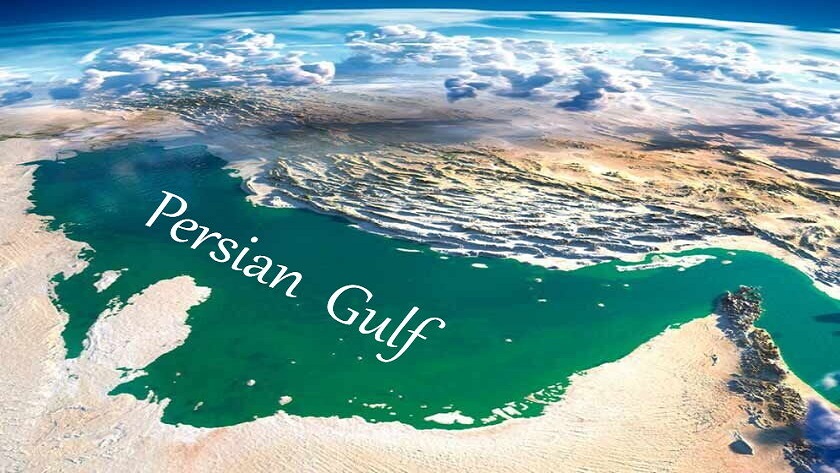AhlulBayt News Agency: The Persian Gulf is a mediterranean kind of sea in Western Asia and It is connected to the Gulf of Oman in the east by the Strait of Hormuz.
Spanning some 250,000 square kilometers, the
Persian Gulf is bounded by the Arvand River in the north, which forms
the frontier between Iran and Iraq, and the Strait of Hormuz in the
south, which links the Persian Gulf to the Sea of Oman and the Indian
Ocean.
It shares boundaries with littoral states Iran (Persia), Oman, Iraq, Kuwait, Saudi Arabia, Bahrain, Qatar, and the United Arab Emirates. The Strait of Hormuz connects the Persian Gulf to the Gulf of Oman.
Historical name
From millennia B.C. up until now, the Persian Gulf has always been referred to with the same ancient name or the ‘Persian Sea’ in a variety of books, travelogues, documents, maps, historical researches, and numerous international documents written in different languages. Historians and researchers have emphatically used the same name particularly in credible Islamic and Arabic sources of reference.
In the Greek sources, the body of water that bordered this province came to be known as the "Persian Gulf". In the book of Nearchus known as Indikê (300 BC), the word "Persikon kolpos" is mentioned for multiple times meaning "Persian gulf".
During the years 550 to 330 BC, coinciding with the sovereignty of the Achaemenid Persian Empire over the Middle East area, especially the whole part of the Persian Gulf and some parts of the Arabian Peninsula, the name of "Persian (Pars) Sea" is widely found in the compiled written texts.
At an official level, the UN and various other international bodies recognise "Persian Gulf" as the established and recommended name based on historical usage. That is also the official position of the US an other major countries across the world.
Persian Gulf Geography
The Persian Gulf is located between 24° to 30° 30' N latitude and 48° to 56° 25' E longitude. The present Persian Gulf is a small part of a vast water space called Persian Sea in the remote past as it embraced the whole Makran (Oman) Sea and a part of the Indian Ocean up to the Indus River.
Persian Gulf is the warmest water expanse known with dry semi-tropical climate. Its widest part reaches 180 miles and its depth is from 10-30m in the west to 93m which is its deepest point 15Km away from the Island, Big Tonb. The low depth of Persian Gulf constantly causes land to advance into the sea. Despite its highly salty water, there are 200 underground water springs flow on the floor of the Persian Gulf and 25 springs with palatable water on its shore all arising from Zagros or Pars Mountains in Iran. Arvand, Karoon, Dialeh, Zaab, Jaraahi, Mand, Daalaki and Minaab are the largest rivers pouring into Persian Gulf.
Despite the fact that Persian Gulf is connected to both Indian Ocean and Makran Sea, it is one of the shallowest seas of the world (with its deepest point reaching only 93m) comparable only to Baltic Sea and Hudson Gulf. While depth of Makran Sea reaches 3000m in certain places and that of Red Sea to more than 1000m, the average depth of Persian Gulf is 30m. This water expanse is the oldest known sea of the world. According to tectonic maps, Persian Gulf is one of the most seismically active foci of the world.
Persian Gulf Islands
Located in the Strait of Hormuz, just 60 kilometers away from the Omani shore, Qeshm is an island with a great abundance of wildlife and plenty of unique geological formations, many of which are listed as UNESCO Heritage sites.
The largest island in the Persian Gulf, Qeshm is fringed with biologically diverse mangrove forests, attractive beaches and 60 Bandari (local) villages.
Kish Island is located in the Persian Gulf and it is one of the most popular tourist islands in Iran. Due to the beautiful landscape of this island, it is known as the pearl of the Persian Gulf.
Abu Musa, Greater Tunb and Lesser Tunb are also located near Hormuz strait.
Persian Gulf geopolitics
The Middle East’s first discovery of oil in the Iranian city of Masjed Soleiman in the early 19th century increased the geopolitical weight of the Persian Gulf region, and consequently, the start of a wave of explorations, extractions and exploitations changed the region's – and the world's – history.
The Persian Gulf is now considered as the energy hub of the world. Close to 20 million barrels of crude and condensates are shipped from the Persian Gulf and through the strategic Strait of Hormuz per day. With the normal global oil consumption amounting to about 100 million bpd, that means almost a fifth of world demand passes through the strategic strait.
About 50,000 ships navigate through the waterway annually, of which 17,000 are oil tankers that head to Asian countries.
However, the variable geopolitical factors in the Persian Gulf are
not merely limited to oil. In fact, different periods of history have
laid different impacts on the strategic water body.
/129

